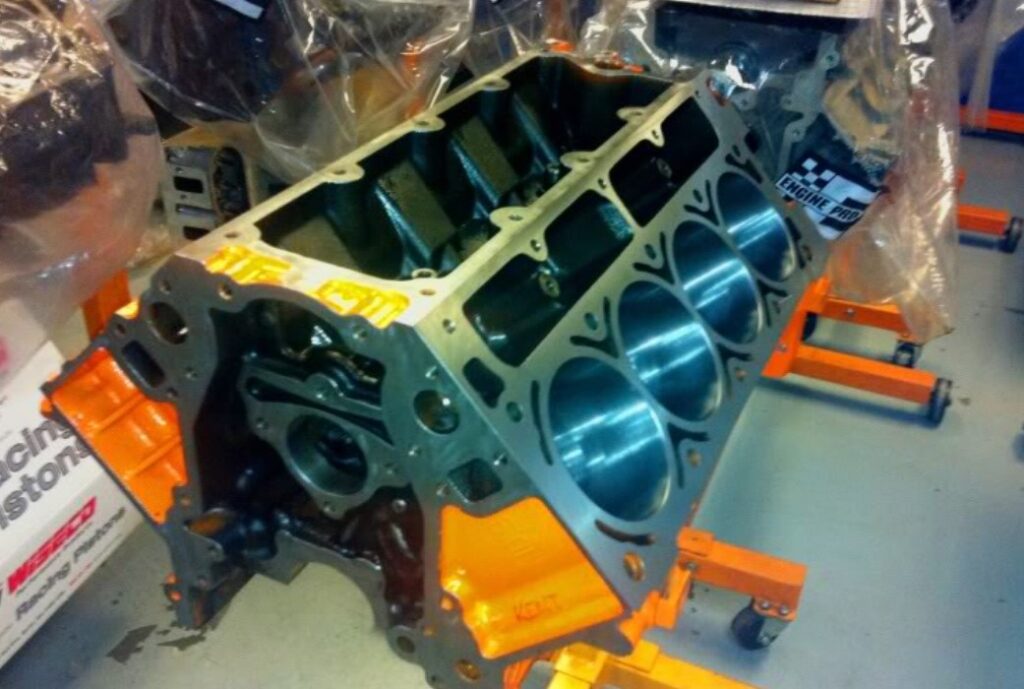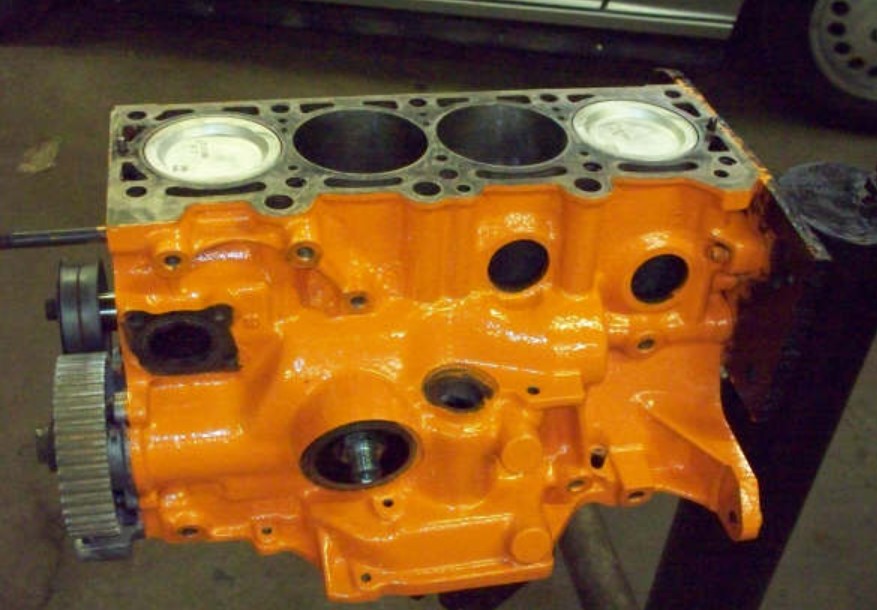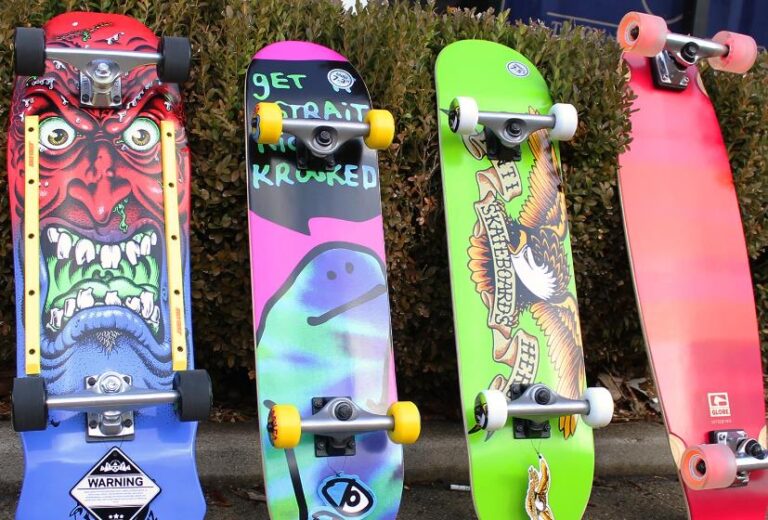Can You Powder Coat An Engine Block? Is It Possible?
Powder coating an engine block is a topic that garners interest from automotive enthusiasts and professionals alike. So, the question arises Can You Powder Coat An Engine Block? This process not only enhances the engine’s appearance but also offers a durable, corrosion-resistant finish. However, it requires meticulous preparation and expertise.
Key Takeaways
- Powder Coating is Feasible: It’s possible to powder coat an engine block for improved aesthetics and protection.
- Preparation is Crucial: Proper cleaning and preparation are essential for a successful coating.
- Professional Application Recommended: Due to the complexity, professional application is advised.
- Durability and Protection: Offers a tough, long-lasting finish and corrosion resistance.
- Cost and Time: The process can be costly and time-consuming.
Can You Powder Coat An Engine Block?
Yes, you can powder-coat an engine block. This process provides a durable, corrosion-resistant finish, enhancing both the appearance and longevity of the engine block.

However, it requires proper preparation, including thorough cleaning and sandblasting, and should ideally be done by professionals with the necessary equipment.
Understanding Powder Coating
Powder coating is a process where a dry powder is electrostatically applied to a surface and then cured under heat to form a skin-like layer. This method is known for its durability and high-quality finish. When it comes to engine blocks, powder coating is an excellent choice for both protection and style.
The Process
- Cleaning: The engine block must be thoroughly cleaned to remove grease, dirt, and debris.
- Blasting: Sandblasting or media blasting prepares the surface for coating.
- Application: Electrostatically charged powder is sprayed onto the surface.
- Curing: The coated engine block is heated in a curing oven to harden the coating.
Benefits of Powder Coating an Engine Block
Powder coating an engine block isn’t just about aesthetics; it offers significant benefits.

Enhanced Durability
- Resistant to Heat and Chemicals: Powder coatings withstand high temperatures and exposure to chemicals.
- Scratch and Impact Resistance: Provides a hard layer that resists scratches and impacts.
Improved Aesthetics
- Variety of Finishes: Available in various colors and textures.
- Uniform Coverage: Ensures a smooth, even surface without drips or runs.
Considerations Before Powder Coating
Before deciding to powder coat your engine block, there are important factors to consider.
Cost and Time
- Expense: It can be more expensive than traditional painting methods.
- Time-Consuming: The process requires significant preparation and curing time.
Technical Expertise
- Professional Service: Due to the technical nature, professional service is recommended.
- Equipment Requirements: Specialized equipment is needed for both application and curing.
The Preparation Process
Proper preparation is key to a successful powder coating.

Cleaning and Degreasing
- Thorough Cleaning: Ensures removal of all contaminants.
- Attention to Detail: Every nook and cranny must be free of dirt and grease.
Sandblasting
- Surface Profiling: Creates an ideal surface for coating adherence.
- Removal of Old Paint and Rust: Essential for a clean, bare metal surface.
Application and Curing
The application and curing stages are critical for a high-quality finish.
Application Technique
- Even Application: Ensures uniform thickness and appearance.
- Skilled Technique: Requires a steady hand and an eye for detail.
Curing Process
- Temperature Control: Precise temperature is crucial for proper curing.
- Time Management: Adequate time in the oven ensures a hard, durable finish.
Maintenance and Care
Post-coating maintenance is essential for longevity.

Regular Cleaning
- Gentle Cleaning Products: Avoid harsh chemicals that can damage the coating.
- Regular Maintenance: Helps maintain the appearance and integrity of the coating.
Inspection and Touch-Ups
- Routine Checks: Look for any chips or damage.
- Professional Touch-Ups: Recommended for any necessary repairs.
Advanced Techniques in Powder Coating Engine Blocks
Delving deeper into the realm of powder coating engine blocks, advanced techniques play a crucial role. These methods ensure not only a visually stunning finish but also enhance the longevity and resilience of the coating.
High-Temperature Coatings
High-temperature powder coatings are specifically designed for engine blocks. They can withstand extreme heat, which is a critical factor for engine components.
- Specialized Formulations: These coatings are engineered to resist the high operational temperatures of an engine block.
- Long-Term Durability: They provide a finish that won’t degrade or discolor under high heat conditions.
Specialized Finishes
Beyond basic colors, specialized finishes can create a unique look for your engine block.
- Metallic and Textured Finishes: These add depth and character to the engine’s appearance.
- Custom Color Matching: Tailoring the color to match or complement the vehicle’s color scheme enhances overall aesthetics.
Challenges and Solutions in Powder Coating Engine Blocks
While powder coating offers numerous benefits, it’s not without its challenges. Understanding these and knowing the solutions ensures a successful application.

Dealing with Complex Geometries
Engine blocks have intricate designs and hard-to-reach areas that can be challenging to coat evenly.
- Advanced Spraying Techniques: Using specialized nozzles and adjusting the spraying method can ensure even coverage.
- Multiple Coating Layers: Applying several thin layers can achieve a more uniform finish than a single thick layer.
Ensuring Adhesion on Different Metals
Engine blocks are made from various metals, each with its adhesion properties.
- Surface Treatment Variations: Tailoring the surface preparation process according to the metal type is crucial.
- Adhesion Promoters: Using specific chemicals that enhance the powder’s ability to bond with different metals.
Innovations in Powder Coating Technology
The field of powder coating is constantly evolving, with new technologies enhancing the process and outcome.
Electrostatic Spray Deposition (ESD)
ESD is a cutting-edge technique that improves the efficiency and quality of powder coating.
- Enhanced Efficiency: ESD allows for a more uniform application of powder, reducing waste.
- Improved Finish Quality: Results in a smoother, more consistent coating.
UV-Curable Powder Coatings
UV-curable coatings are a newer development in the powder coating industry.
- Rapid Curing Time: UV curing significantly reduces the time required to cure the coating.
- Environmentally Friendly: These coatings often contain lower levels of volatile organic compounds (VOCs).
Long-Term Care and Maintenance
Maintaining a powder-coated engine block is key to preserving its appearance and protective qualities over time.

Regular Inspections
Regularly inspecting the coating can catch any issues before they become significant problems.
- Check for Chips and Scratches: Early detection allows for prompt touch-ups.
- Monitor for Signs of Wear: Over time, even durable coatings can begin to show signs of wear.
Professional Consultation
For maintenance and repair, consulting with a professional can ensure the best care.
- Expert Advice: Professionals can provide tailored advice for your specific coating and usage.
- Quality Repairs: Professional services ensure that any touch-ups or repairs match the original quality.
How Do You Powder Coat An Engine Block?
Powder coating an engine block involves a series of steps, each critical to ensure a high-quality finish that is both durable and aesthetically pleasing. The process typically includes the following stages:

- Disassembly and Cleaning: The first step is to completely disassemble the engine block and thoroughly clean it. This involves removing all oil, grease, and other contaminants. A chemical degreaser or solvent is often used for this purpose.
- Sandblasting: After cleaning, the engine block is sandblasted. This process removes any rust, old paint, and creates a surface texture that helps the powder coating adhere more effectively.
- Applying the Powder: The powder is applied using an electrostatic spray gun. The gun imparts a positive electric charge to the powder, which is then sprayed onto the grounded engine block, ensuring a uniform coat.
- Curing: Once the engine block is evenly coated, it is cured in a high-temperature oven. The curing process typically involves heating the block to temperatures around 400°F for about 10 to 20 minutes. This melts the powder into a smooth, hard finish.
- Cooling and Reassembly: After curing, the engine block is allowed to cool before it is reassembled.
Each step requires precision and attention to detail, making it a task best suited for professionals with the necessary equipment and expertise.
Is It Better To Paint Or Powder Coat An Engine?
Choosing between painting and powder coating an engine block depends on several factors, including durability, cost, environmental impact, and the desired finish.
- Durability: Powder coating is generally more durable than paint. It creates a thicker, more uniform layer that is resistant to chipping, scratching, and corrosion. This makes it ideal for the harsh conditions of an engine block.
- Cost: Initially, powder coating can be more expensive than painting due to the equipment and process involved. However, its durability often means lower maintenance costs over time.
- Environmental Impact: Powder coating is more environmentally friendly compared to traditional painting. It releases fewer volatile organic compounds (VOCs) and produces less hazardous waste. Additionally, excess powder can be collected and reused.
- Finish: Powder coating provides a more uniform, even finish without drips or runs. It also offers a wider range of finishes, including textures and custom colors.
- Application Process: Powder coating requires specialized equipment and a controlled environment, making it less accessible for DIY projects compared to painting.
What Engine Parts Can Be Powder Coated?
Powder coating can be applied to a wide range of engine parts, enhancing both their durability and aesthetic appeal. The suitability of powder coating for different engine parts depends on the material they are made of and their exposure to heat and stress. Commonly powder-coated engine parts include:

- Engine Block: The main structure of an engine can be powder coated for increased corrosion resistance and improved appearance.
- Valve Covers: These are often powder-coated for a custom look, as they are highly visible and less exposed to extreme heat.
- Intake Manifolds: Powder coating can be used on intake manifolds, but it’s important to use high-temperature powders due to their exposure to heat.
- Brackets and Pulleys: These smaller components are ideal candidates for powder coating, as they add a layer of protection and can be color-matched for a cohesive look.
- Transmission Casings: Like engine blocks, transmission casings can also be powder-coated for enhanced durability and aesthetics.
It’s important to note that not all engine parts are suitable for powder coating. Parts that are exposed to extremely high temperatures, like exhaust manifolds, may require specialized high-temperature coatings.
Can A Complete Engine Be Powder Coated?
Powder coating an entire engine is not typically recommended due to practical and functional considerations. While individual engine components can be powder-coated, coating a complete engine assembly presents several challenges:
- Heat Tolerance: Not all parts of an engine can withstand the high curing temperatures required for powder coating without damage or warping.
- Complex Assembly: An engine is a complex assembly with many moving parts. Powder coating the entire engine could lead to the coating getting into places where it could hinder the engine’s functionality, such as bearing surfaces, cylinder bores, and oil passages.
- Disassembly and Reassembly: To powder coat an engine effectively, it would need to be completely disassembled to ensure thorough coating and to avoid coating internal components. This disassembly and subsequent reassembly are both time-consuming and technically challenging.
- Maintenance and Repairs: Coating the entire engine could make future maintenance and repairs more difficult, as the coating would need to be removed to access certain parts.
Therefore, while it’s technically possible to powder coat an entire engine, it is generally not advisable. Focusing on individual components that benefit most from powder coating is a more practical approach.
Can You Powder Coat The Engine Block And Head?
Powder coating both the engine block and the head is a feasible and increasingly popular option in automotive customization and restoration. The process for both is similar and offers several benefits:

- Engine Block: The engine block, being the core structure of the engine, is a prime candidate for powder coating. The coating provides a durable, corrosion-resistant finish, which is essential for the longevity and efficiency of the engine.
- Engine Head: Similarly, the engine head can also be powder coated. However, it’s crucial to use a high-temperature-resistant powder coating material due to the engine head’s exposure to high operational temperatures.
The key to successful powder coating of these parts lies in the preparation process. Both the engine block and head must be thoroughly cleaned and sandblasted to ensure proper adhesion of the powder coat. It’s also important to mask off any areas where powder coating is not desired, such as threaded holes and mating surfaces.
What Is The Cost Of Powder Coating An Engine Block?
The cost of powder coating an engine block can vary widely based on several factors. These include the size of the engine block, the type of powder coat used, the color and finish selected, and regional pricing differences. On average, you can expect the following:
- Small Engine Blocks: For smaller blocks, such as those in motorcycles or small cars, prices might range from $250 to $500.
- Large Engine Blocks: Larger engine blocks, like those in trucks or performance cars, can cost anywhere from $500 to $1,000 or more.
- Additional Costs: Custom colors, special finishes (like metallic or textured), and extensive surface preparation can add to the cost.
It’s important to consult with a professional powder coating service for an accurate quote, as prices can vary significantly based on specific requirements and local market rates.
Which Other Parts Are Ideal Candidates For Powder Coating?
Apart from the engine block and head, several other vehicle parts are ideal for powder coating due to their exposure to environmental elements and the need for durability. Some of these parts include:

- Wheels: Powder-coating wheels can provide a durable, long-lasting finish that withstands road wear and tear better than traditional paint.
- Suspension Components: Powder-coating suspension parts, such as springs and control arms, can protect them from corrosion and improve their appearance.
- Chassis Parts: The chassis and frame of a vehicle can benefit greatly from powder coating, offering enhanced protection against rust and corrosion.
- Brake Calipers: Powder-coating brake calipers not only improve their appearance but also protect them from heat and brake dust.
- Bumpers and Metal Trim: These exterior parts are excellent candidates for powder coating due to their high exposure to the elements and potential for cosmetic enhancement.
Each of these parts can benefit from the durability, range of finishes, and overall quality that powder coating provides, making it a popular choice for both restoration projects and custom automotive work.
Conclusion
Powder coating an engine block is a viable and beneficial option for those looking to enhance both the appearance and durability of their engine. While it requires significant preparation, professional application, and maintenance, the result is a high-quality, resilient finish that not only looks great but also provides excellent protection. Powder coating an engine block is an investment in your vehicle’s performance and aesthetics.
People Also Ask
What is the main advantage of powder coating an engine block?
Powder coating provides superior durability and heat resistance compared to traditional paint. It forms a hard, protective layer that is resistant to chemicals, corrosion, and high temperatures, making it ideal for the harsh environment of an engine block.
Can powder coating withstand the high temperatures of an engine?
Yes, high-temperature powder coatings are specifically formulated to withstand the extreme heat generated by engine blocks. These coatings maintain their color and integrity even under high thermal stress.
How long does powder coating on an engine block last?
The longevity of powder coating on an engine block depends on various factors like the quality of the application, the type of powder used, and the engine’s operating conditions. Generally, a well-applied, high-quality powder coat can last many years, often outlasting the life of other types of coatings.
Is powder coating an engine block environmentally friendly?
Powder coating is more environmentally friendly than many traditional liquid paints. It typically contains fewer volatile organic compounds (VOCs) and produces less hazardous waste. Additionally, overspray can be collected and reused, minimizing waste.
Can I powder coat an engine block myself?
While it’s technically possible to powder coat an engine block yourself, it’s not recommended unless you have the necessary equipment, expertise, and a controlled environment. Professional application ensures a more durable and even coating.

Welcome to the exhilarating world of Matt Rex, a professional car racer turned renowned vehicle enthusiast. Immerse yourself in his captivating blog as he shares heart-pounding adventures, expert reviews, and valuable insights on cars, trucks, jets, and more. Fuel your passion for speed and discover the beauty of vehicles through Matt’s engaging stories and meticulous expertise. Join the ever-growing community of enthusiasts who find inspiration and expert advice in Matt Rex’s blog—a digital hub where the thrill of speed meets the pursuit of knowledge.





![Why Do Buses Have Blue Lights Inside? [Answered]](https://www.turbochaos.com/wp-content/uploads/2023/09/Why-Do-Buses-Have-Blue-Lights-Inside.jpg)

![International DT466E Problems [All You Need To Know]](https://www.turbochaos.com/wp-content/uploads/2024/01/International-DT466E-Problems-768x511.jpg)